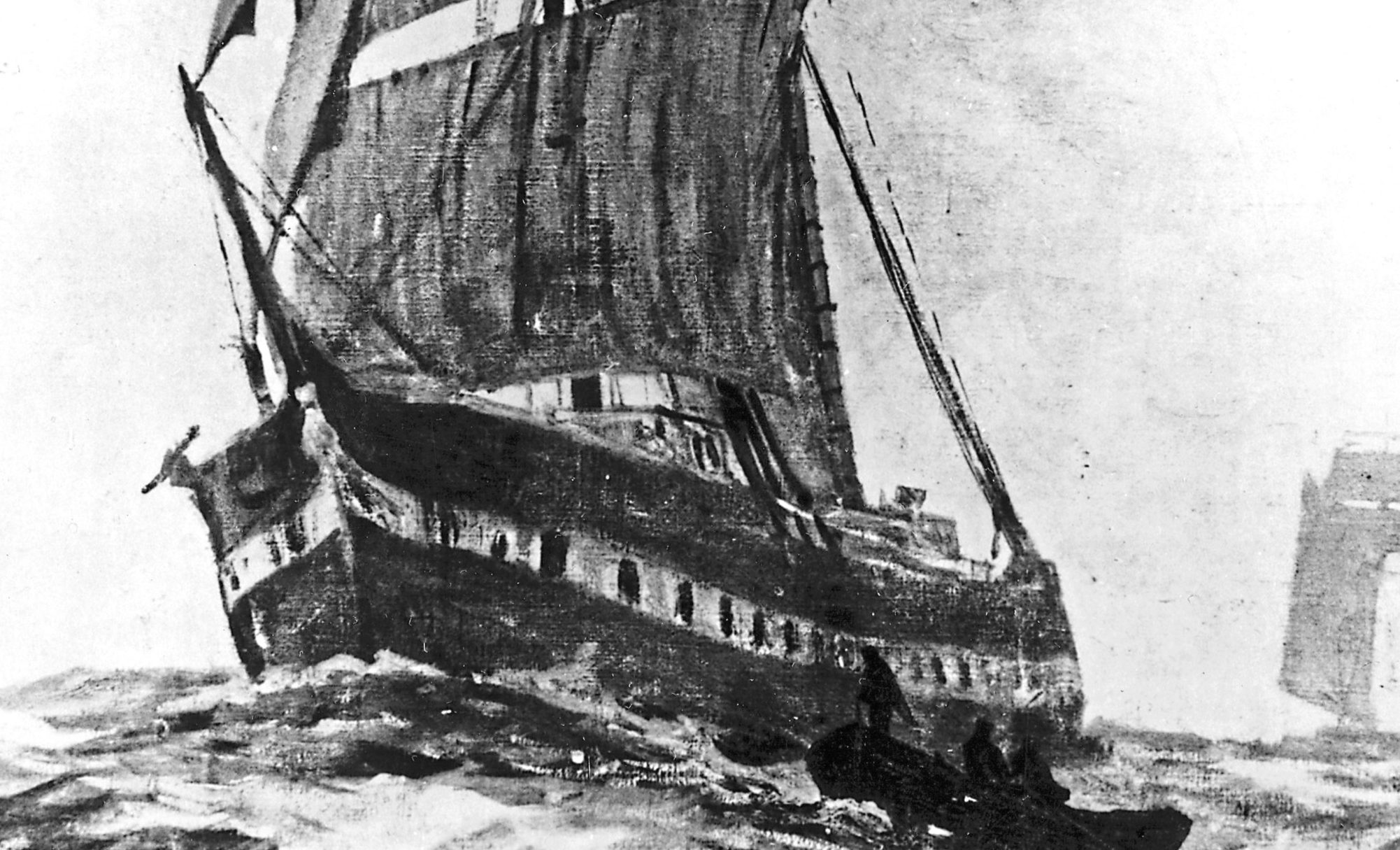
ASK anyone to name a ghost ship and I’ll wager they’ll say the Marie Celeste.
But the thing is, that ship’s about as real as the Flying Dutchman.
The Marie Celeste appeared in Sherlock Holmes creator Sir Arthur Conan Doyle’s synonymously-written short story J. Habakuk Jephson’s Statement.
But the mistake is understandable as this was the testimony of an imagined sole survivor of a fictionalised version of the Mary Celeste, and Doyle didn’t exactly tax the ol’ noggin in disguising his inspiration.
The real Mary Celeste, though, is the most famous phantom ship in history and one of the world’s greatest mysteries, having been found adrift off the Azores on December 5 1872 after sailing from New York.
An American merchant brigantine, she was in a dishevelled condition with some rigging missing despite being still under partial sail.
But the crew had vanished along with Captain Briggs, his wife and their two-year-old daughter.
None was ever seen or heard from again.
Their personal belongings were undisturbed but the ship’s lifeboat was missing, as were her papers and navigational instruments, and the last logbook entry was made nine days previously.
The Mary Celeste was undamaged though there was a metre of water in the hold and the cabins were wet from water that had got in through open doors and skylights.
Her pump was found disassembled on the deck, so did Briggs order her abandonment fearing the ship was about to founder?
But she was well-provisioned and her cargo of denatured alcohol untouched, and a board of enquiry failed to come up with a single explanation.
They pondered mutiny, piracy by the vessel that found her and conspiracy to carry out insurance or salvage fraud.
More fanciful explanations included the crew being overcome by fumes from the cargo, underwater earthquakes, waterspouts, attack by a giant squid – yes, really – and, predictably, alien abduction.
Interestingly, the Mary Celeste continued in service before being deliberately wrecked off Haiti in an attempted insurance fraud.
The Mary Celeste isn’t the only ghost ship. Take HMS Eurydice, a Royal Navy training ship, which was sailing home to Portsmouth in 1878 when she was hit by a freak storm off the Isle of Wight.
She was thought to have sunk and only two of her mainly teenage 319-strong crew survived. But since then there have been several sightings of a ghost ship thought to be Eurydice, including one by Prince Edward in 1998.
The Jain Seng’s another big mystery, literally, as the derelict tanker was 250 feet long.
She was found adrift off Australia in 2006 with nothing but a large quantity of rice on board, and no evidence a crew had been on board or had abandoned ship.
It’s thought she’d been adrift for years but no official record has ever been found.
Also found off the Aussie coast was the Kaz II. Three men disappeared without trace from this 20-foot catamaran in 2007.
When she was discovered food and cutlery were still on the table, a laptop was turned on and the engine was still running.
The only sign of something amiss was one of the sails had been shredded and a liferaft was missing.
A freighter, the SS Baychimo, was abandoned after becoming trapped in Arctic ice off the north coast of Alaska in 1931.
But the ice drifted and she disappeared, only to be spotted several times up to 300 miles away, most recently in 1969 still trapped in the ice.
The Alaskan government have been hunting her since 2006.
Going back to sail, the Carrol A. Deering was a five-mast schooner that sailed from Barbados after the captain forgave her first mate for threatening to “get him”.
She was found aground on shoals off the US coast, abandoned with logs and navigation equipment gone but a meal half-prepared in the galley.
It seems the crew went missing in the Bermuda Triangle but although no fewer than six US government departments investigated the mystery remains unsolved.
More recently, the chilling tale of a rat-infested ghost ship drifting towards our shores sounds like a Hammer horror movie.
But in 2014 British coastguards were alerted to look out for an abandoned cruise liner adrift in the North Atlantic.
She’s the 4,000-ton Lyubov Orlova and it’s feared her only passengers now are vicious, disease-ridden rats who eat each other to survive.
The ship’s position is a mystery despite several high-level searches.
In 2013, satellites picked up an unidentified blip off the coast large enough to be the Orlova but spotter planes found nothing – she’d disappeared again.
Some are sure she’s sunk but salvage-hunters have scoured the seas for the ship, drawn by the lure of her value as scrap.
So how did the liner, named for a Russian actress, come to be drifting the high seas?
She carried passengers to the polar regions but was impounded in Newfoundland four years ago because of debts, and abandoned by her unpaid crew.
In 2012 she was to be towed to the Dominican Republic to be scrapped but when the towline broke, the Canadian government ordered her to be towed far out to sea and released her to her fate.


Enjoy the convenience of having The Sunday Post delivered as a digital ePaper straight to your smartphone, tablet or computer.
Subscribe for only £5.49 a month and enjoy all the benefits of the printed paper as a digital replica.
Subscribe